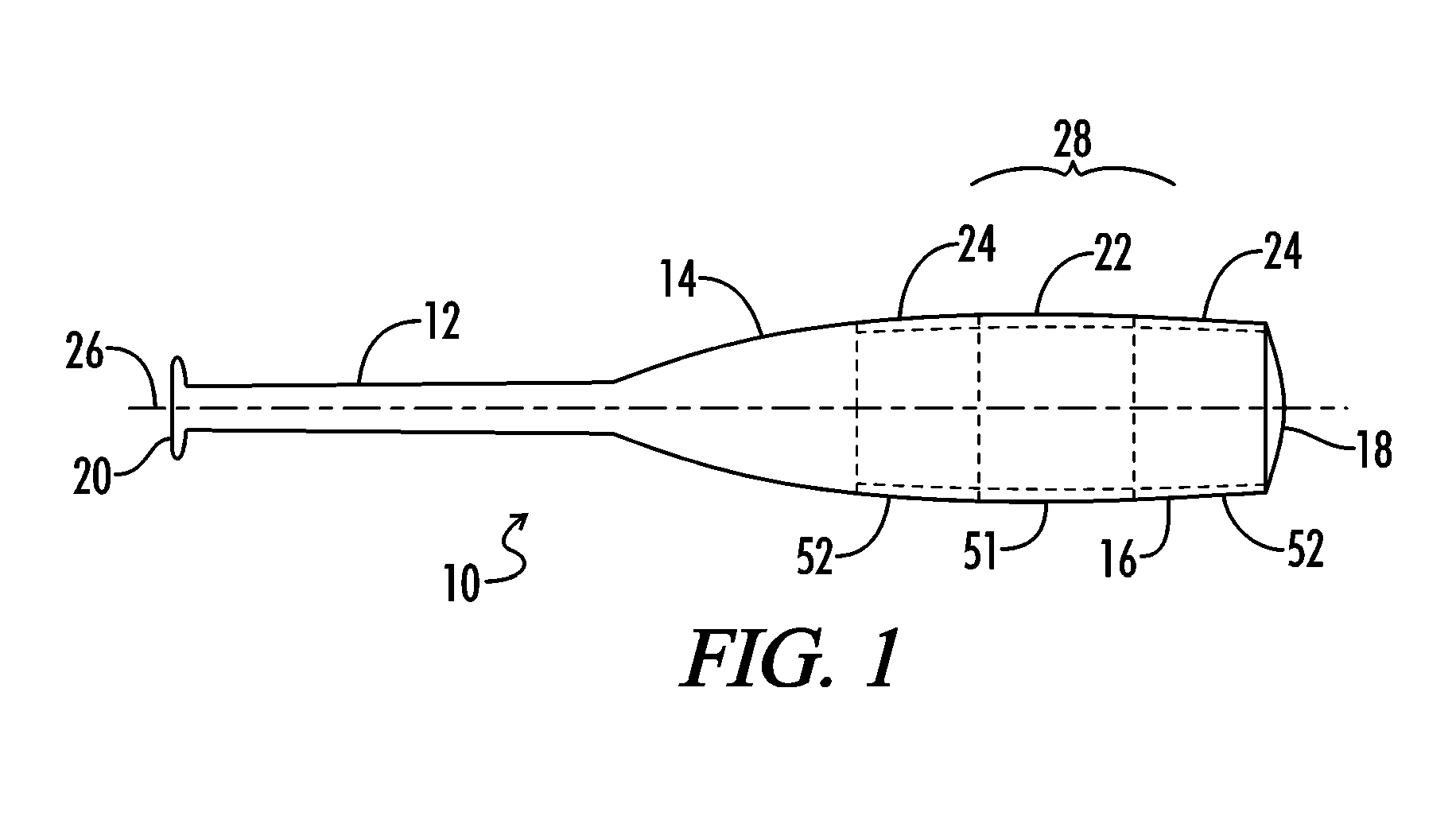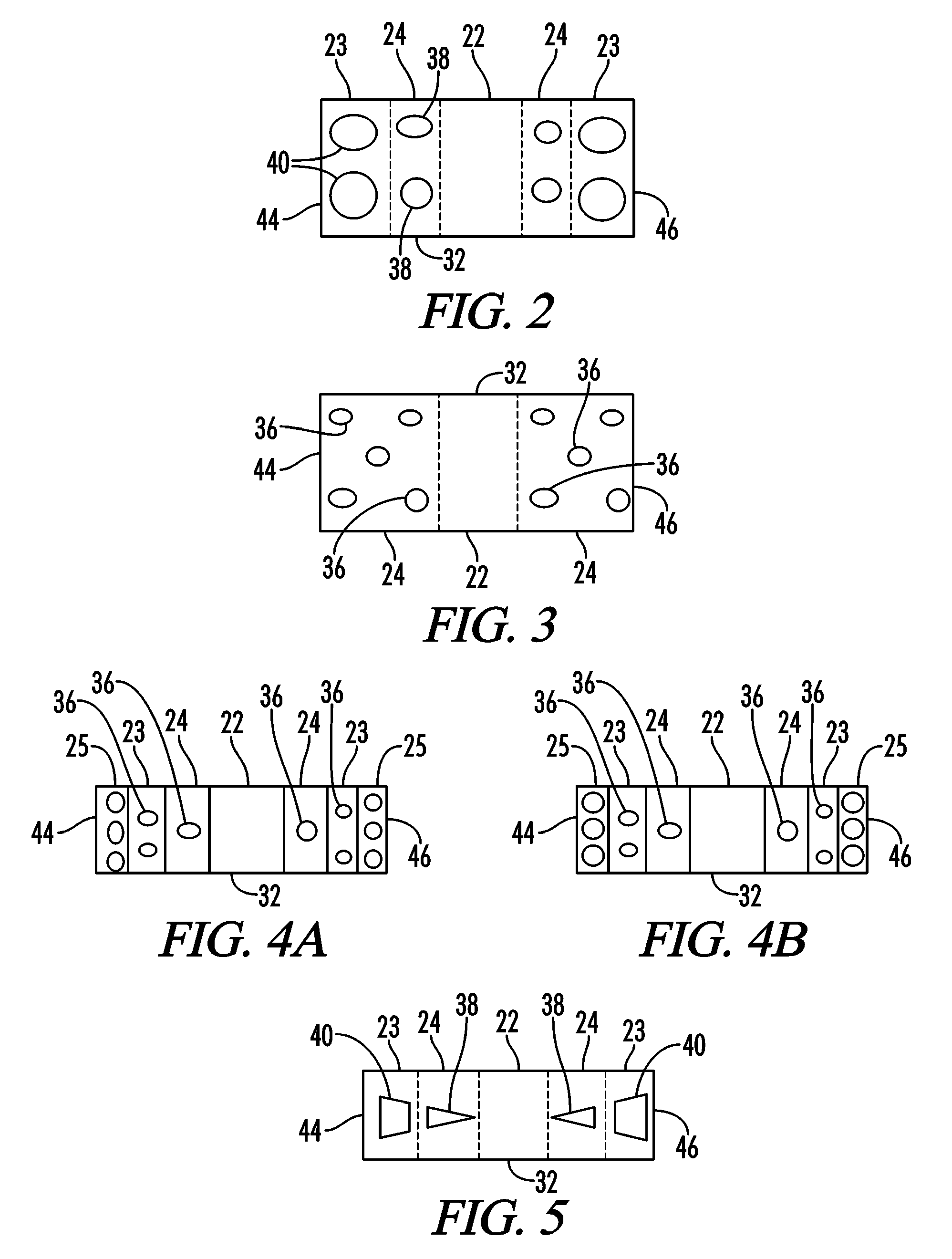Bat having a sleeve with holes
a bat and sleeve technology, applied in the field of baseball bats, can solve the problems of reducing affecting the performance of the target area, so as to achieve less stiffness and prevent rough surfaces
- Summary
- Abstract
- Description
- Claims
- Application Information
AI Technical Summary
Benefits of technology
Problems solved by technology
Method used
Image
Examples
Embodiment Construction
[0032]Referring generally now to FIGS. 1 and 3, there is shown generally at 10 one embodiment of the bat of the present invention. The bat 10 comprises a handle portion 12, a transition portion or taper portion 14, and a barrel portion 16. The transition portion 14 is preferably attached to the handle portion 12, while the barrel portion 16 is attached to the transition portion 14. An end cap 18 is traditionally placed on the end of the barrel portion 16 distal from the taper 14. A knob 20 is traditionally attached to the handle 12 on the end of the handle 12 distal from the barrel portion 16. Each bat has a preferred hitting section 28 that can also be called the sweet spot. In a traditional bat, the preferred hitting portion 28 lies in the middle portion of the barrel portion. For the purposes of this application, the area proximal the central part of the barrel portion 16 is the first cross-section 22. The area on either or both sides of the barrel portion will be called the seco...
PUM
 Login to View More
Login to View More Abstract
Description
Claims
Application Information
 Login to View More
Login to View More - R&D
- Intellectual Property
- Life Sciences
- Materials
- Tech Scout
- Unparalleled Data Quality
- Higher Quality Content
- 60% Fewer Hallucinations
Browse by: Latest US Patents, China's latest patents, Technical Efficacy Thesaurus, Application Domain, Technology Topic, Popular Technical Reports.
© 2025 PatSnap. All rights reserved.Legal|Privacy policy|Modern Slavery Act Transparency Statement|Sitemap|About US| Contact US: help@patsnap.com



